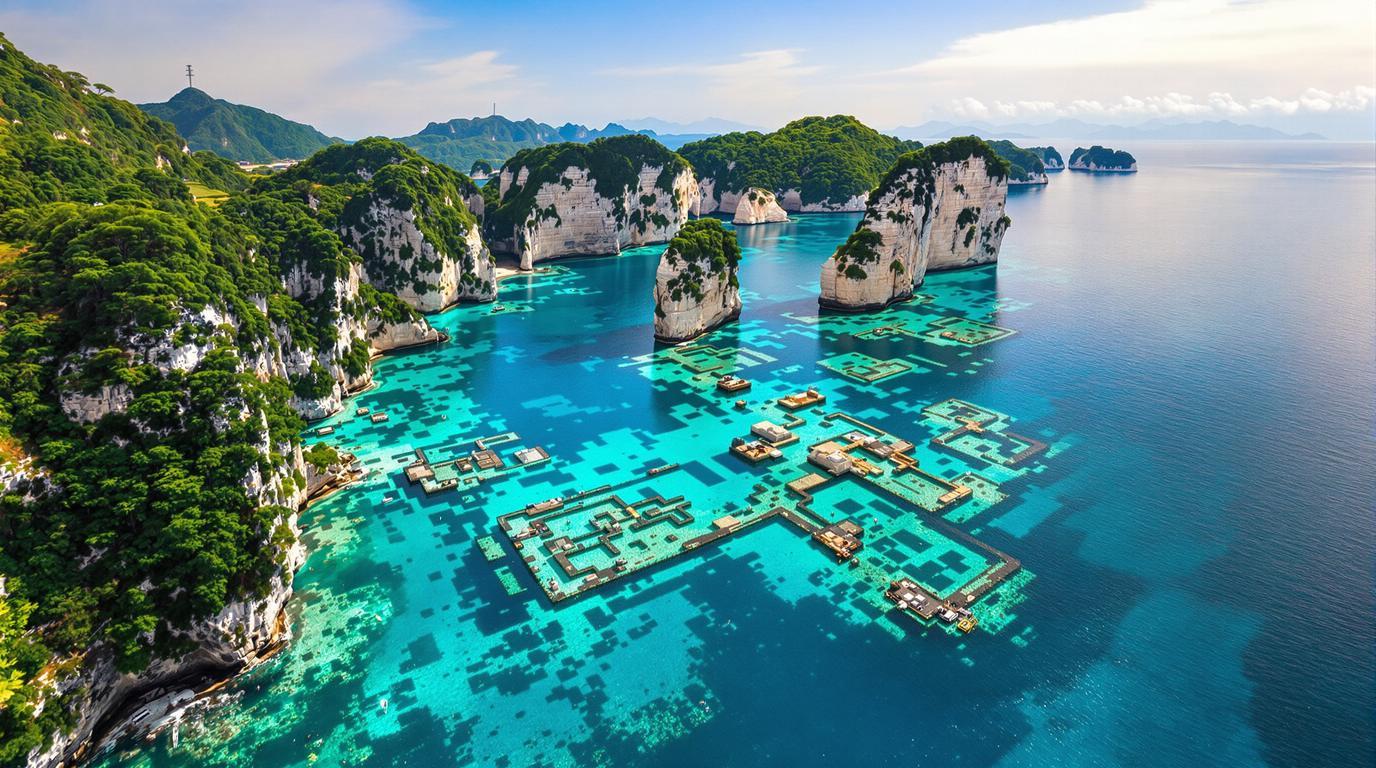On Japan’s westernmost frontier, a tiny island is caught in a rising geopolitical storm. Yonaguni Island, with its breathtaking cliffs and mysterious underwater ruins, sits just 70 miles from Taiwan in the East China Sea. While offering some of Asia’s most spectacular diving, this remote outpost of barely 1,500 residents now finds itself on the frontline of mounting regional tensions.
The Far Edge of Japan
Yonaguni marks Japan’s westernmost inhabited point, a tropical speck where wild horses roam freely along dramatic coastlines. On clear days, Taiwan’s mountains loom on the horizon – a visual reminder of the island’s strategic position. This proximity has thrust Yonaguni into the spotlight amid growing Chinese military activities around Taiwan.
“When the weather is good, we can see Taiwan from here,” explains local fishing guide Kenji Yamashiro. “It’s always been our neighbor, but now that relationship feels complicated by politics and military concerns.”
A Paradise Under Pressure
Despite geopolitical tensions, Yonaguni retains its allure as a hidden gem beloved by locals. Divers flock to the famous Yonaguni Monument – a massive underwater formation that some believe to be the remains of an ancient civilization. Between November and May, schools of hammerhead sharks gather in the surrounding waters, creating a spectacle rivaling South America’s most magical marine encounters.
Military Buildup Transforms Island Life
Since 2016, Japan’s military presence has grown substantially on Yonaguni. What began as a small radar installation has expanded into a significant Ground Self-Defense Force base housing hundreds of personnel. New missile defense systems and military infrastructure now dot the once-pristine landscape.
“The military presence has changed everything – our economy, our environment, even how safe we feel,” notes Tomoko Hashimoto, a third-generation Yonaguni resident. “Some welcome the jobs, but others worry we’re becoming a target.”
Economic Shifts and Cultural Impact
The military expansion has brought both opportunities and challenges. Construction projects and service jobs have created employment, yet many locals fear the long-term effects on tourism and traditional industries like fishing. The influx of military personnel has altered the demographic balance on an island already struggling with population decline.
Environmental Concerns Mount
Environmentalists worry about the impact of military activities on Yonaguni’s delicate ecosystem. The island’s unique natural treasures, including endemic species and pristine coral reefs, face mounting pressure from construction and increased maritime traffic.
This scenario mirrors challenges seen in other locations like Turkey’s Cotton Castle, where natural wonders contend with human development.
A Bird’s-Eye Perspective
Viewing Yonaguni from above reveals the stark contrast between its natural beauty and growing militarization – an experience not unlike Africa’s most surreal aerial experiences. The island’s rugged coastline, emerald forests, and traditional villages now share space with radar installations and barracks.
A Community Divided
The military buildup has created divisions within Yonaguni’s tight-knit community. Some residents welcome the economic boost and increased security, while others mourn the loss of tranquility and worry about becoming a potential target in regional conflicts.
“This used to be a peaceful place where people came to escape the world,” says Hiroshi Nakamura, a local historian. “Now we’re at the center of international tensions. It changes how we see our home.”
The Future of Paradise
As geopolitical pressures intensify, Yonaguni faces an uncertain future. Will it retain its character as a natural wonderland, or become primarily known as a strategic military outpost? For visitors seeking undiscovered masterpieces of natural beauty, Yonaguni offers a compelling but increasingly complex destination.
For now, this tiny island continues its balancing act – preserving traditions while adapting to new realities, welcoming visitors while preparing for potential conflicts, and maintaining its identity at the edge of a changing Asia-Pacific region.
